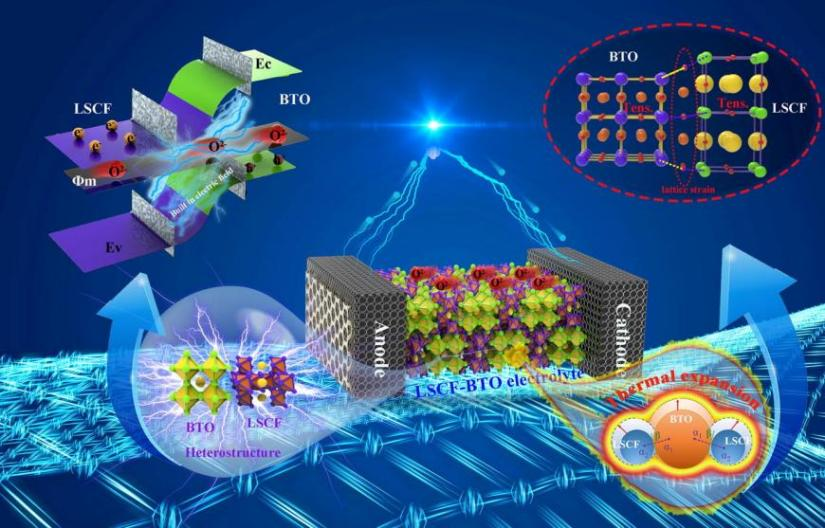The NewsLetters for 2023
source:Bin Zhu clicks: pubdate:2023-08-11
Nanocomposite fuel cells towards Semiconductor Ionics and Semiconductor Electrochemistry
Established in 2006 through the initiative of the European 6th Framework support, the EC-China NANOCOFC research network has undergone over 17 years of development, evolving from its inception with coordination by Sweden's KTH. This collaborative effort later transitioned to China's Hubei University and Southeast University, taking up the mantle of coordinating the network's research and activities. Notably, in the past five years, we have seamlessly integrated into the "Yangzi River Delta International Conferences" framework, a series of international conferences. Within this framework, we annually organize an international seminar on emerging ceramic fuel cell technologies. This journey has traversed from the realm of nanocomposite fuel cells to the frontier of Semiconductor Ionic Membrane Materials (SIMs) and Semiconductor Ionic Membrane Fuel Cells (SIMFCs), and further expanded into Semiconductor-Photo-Ionics/Electrochemistry, a subject elucidated by Prof. Zhu at the 8th Yangzi River Delta International Conference (please refer to the attached ppt).
Summarizing this trajectory of research development, we present a concise overview of our research domain and methodologies. The culmination of over a decade's exploration within the NanocoFC network, bolstered by EC-China's dedicated endeavors, led to a groundbreaking milestone – the creation of single layer electrolyte layer-free fuel cells (SLFC/EFFC). These achievements stemmed from the innovative utilization of semiconductor ionic heterostructure nanocomposites, ingeniously incorporating p, n, and ionic conducting oxides. These accomplishments are underscored by numerous publications, prominently featured in journals like Advanced Functional Materials, Energy & Environmental Science, Journal of Power Sources, Electrochemistry Communications, and International Journal of Hydrogen Energy.
Among these publications, two hold special significance: i) title "An Electrolyte-Free Fuel Cell Constructed from One Homogenous Layer with Mixed Conductivity," was published in Advanced Functional Materials in 2011. This pioneering work is accessible at https://onlinelibrary.wiley.com/doi/abs/10.1002/adfm.201002471. It stands as a testament to our journey in reshaping fuel cell technology and expanding the boundaries of scientific understanding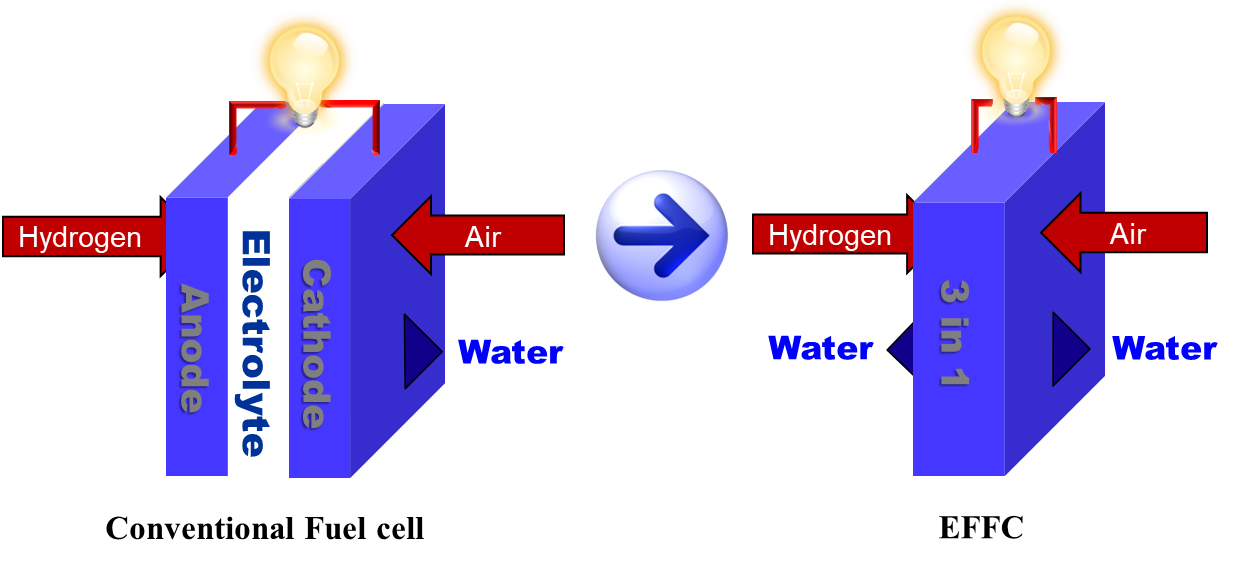
ii) Our pursuits have ventured into the domain of fuel cells featuring both electrolyte and non-electrolyte separators, as underscored by our publication titled "Fuel cells based on electrolyte and non-electrolyte separators" in Energy & Environmental Science (2011), 4, 2986 (https://pubs.rsc.org/en/content/articlelanding/2011/ee/c1ee01202a).In subsequent years, a series of impactful publications have shed light on fundamental aspects and novel mechanisms, revealing the operational principles of Single Layer Fuel Cells (SLFCs) and Electrolyte-Free Fuel Cells (EFFCs). These explorations have laid the scientific foundations for these revolutionary discoveries, driving the evolution from the NANOCOFC era to the realm of Semiconductor Ionic Membrane Materials (SIMs) and Semiconductor Ionic Membrane Fuel Cells (SIMFCs).
iii) "A new energy conversion technology based on nano-redox and nano-device processes" in Nano Energy (2013), 2, 1179-1185;
iv) "Schottky junction effect on high-performance fuel cells based on nanocomposite materials" in Advanced Energy Materials (2015), 5 (8), 1401895;
v) "Novel fuel cell with nanocomposite functional layer designed by perovskite solar cell principle" in Nano Energy (2016), 19, 156;
vi) "Charge separation and transport in La0.6Sr0.4Co0.2Fe0.8O3-δ and ion-doping ceria heterostructure material for a new generation fuel cell" in Nano Energy (2017), 37, 195.
These pioneering innovations stand as transformative milestones, indicating a dynamic shift from the NANOCOFC era to the domain of Semiconductor Ionic Membrane Materials (SIMs) and Semiconductor Ionic Membrane Fuel Cells (SIMFCs). Building on these achievements, a series of representative publications from 2018 to 2019 has illuminated our pathway in this exhilarating journey of scientific exploration.
e:
1. Nanomaterials and technologies for low temperature solid oxide fuel cells: Recent advances, challenges and opportunities, Nano Energy, 2018, 45: 148-176. https://doi.org/10.1016/j.nanoen.2017.12.044.
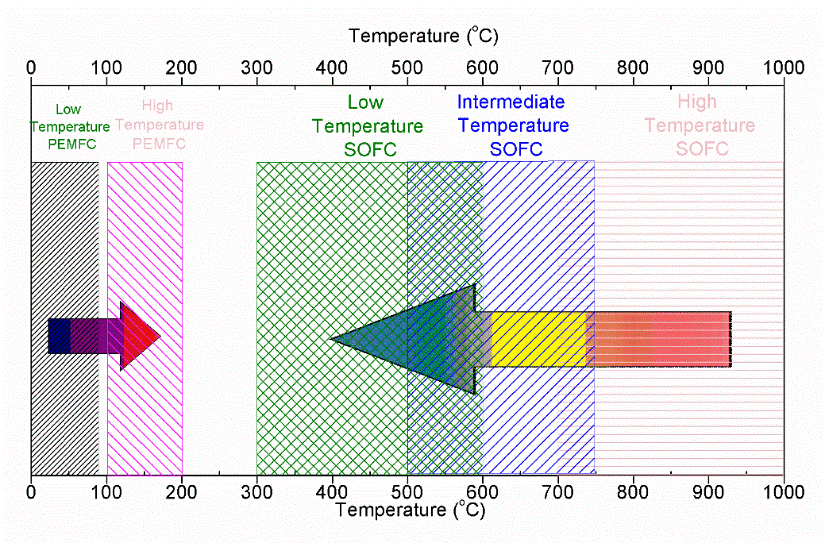
This review article presented the overall view from nanomaterials/nanocomposites as bridge from conventional SOFC to new ceramic fuel cells for low temperatures, 300-600C: Materials, technology and prospective of future research and development. This gives a guidance for our low temperature SOFCs based on NANOCOFC and SIMFC methodologies.
2. Semiconductor-ionic materials could play an important role in advanced fuel-to-electricity conversion, Int J Energy Res. 2018, 42(11): 3413–3415. https://doi.org/10.1002/er.4105.
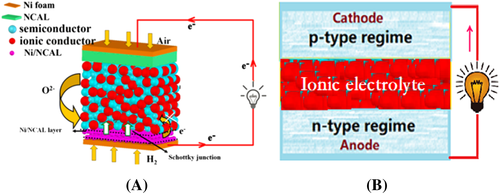
This perspective article based on later research and development from Nanocofc on SIMFC, presented the importance and significance SIM and SIMFC in future advanced fuel-to-electricity conversion for fuel cell research and development.
Based on these strategy and perspective guidance, 2019 is a very fruitful year to develop SIMs/SIMFCs, the following publications are selected to give a view:
3. Shaping triple-conducting semiconductor BaCo0.4Fe0.4Zr0.1Y0.1O3-δ into an electrolyte for low-temperature solid oxide fuel cells, Nature Communications, 2019, 10: 1707, https://doi.org/10.1038/s41467-019-09532-z.
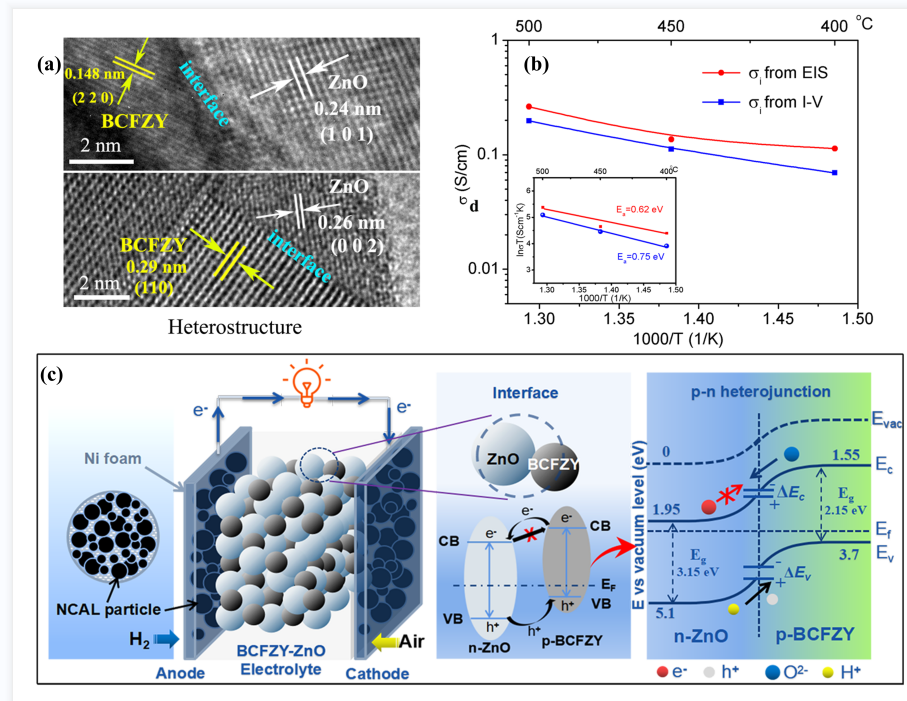
4. Proton Shuttles in CeO2/ CeO2-δ Core-Shell Structure. ACS Energy Letters, 2019, 4: 2601. https://doi.org/10.1021/acsenergylett.9b01829
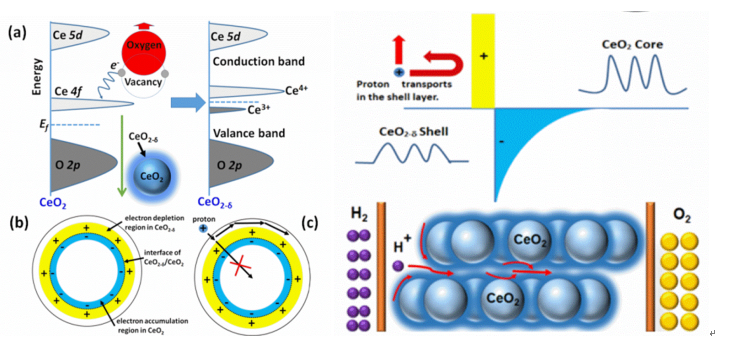
5. Fast ionic conduction in semiconductor CeO2-δ electrolyte fuel cells, NPG Asia Materials, 2019, 11: 51. https://doi.org/10.1038/s41427-019-0152-8.
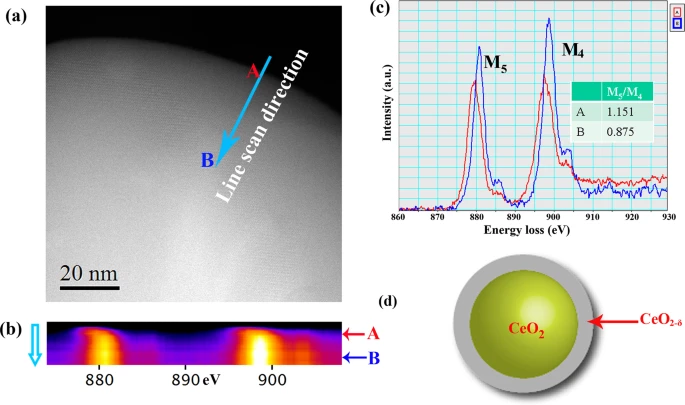
6. Semiconductor TiO2 thin film as an electrolyte for fuel cells, J. Mater. Chem. A, 2019, 7: 16728-16734. https://doi.org/10.1039/c9ta01941c
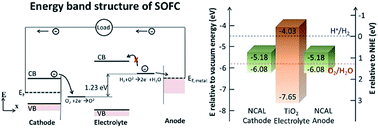
Approaching Durable Single-Layer Fuel Cells: Promotion of Electroactivity and Charge Separation via Nanoalloy Redox Exsolution, ACS Appl. Mater. Interfaces, 2019, 11: 27924. https://doi.org/10.1021/acsami.9b08448.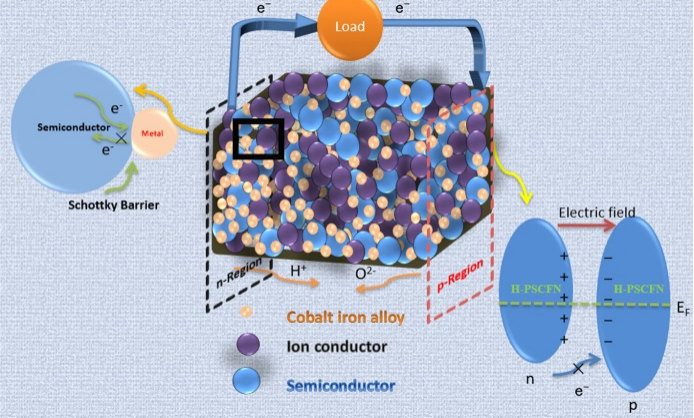
In the research and development of SIMs and SIMFCs, surface and Interface Engineering: Surface and interface engineering stand as powerful methodologies for fine-tuning the performance of SIM materials, especially in the context of hybrid or hetero-structures. The role of surfaces and interfaces is pivotal in dictating the electron and ion transport across SIMFC materials. Through meticulous surface and interface engineering techniques, our objective is to optimize the architectural structures of materials for charge kinetics, ensuring optimal surficial and interfacial properties among diverse particles, layers, or components within the SIM. This encompasses tailoring specific surficial and interfacial structures, introducing interfacial coatings, or controlling interfacial defects and grain boundaries. The scope of surfaces and interfaces spans various material attributes, encompassing semiconducting, p or n-type behavior, insulating, metallic state, ionic conduction, and more.
In 2020, a significant breakthrough emerged within the context of SIM/SIMFC research. This achievement was the result of collaborative efforts involving China University of Geosciences (Wuhan), Southeast University, and other esteemed partners. The pivotal outcome was published in Science under the title "Proton transport enabled by a field-induced metallic state in a semiconductor heterostructure" (Science 2020, 369: 184, https://doi.org/10.1126/science.aaz9139).
Regrettably, due to an inadvertent mistake in the Support Information file, an issue arose subsequent to the publication. This resulted in the retraction of the article by the first affiliation and certain authors, in tandem with the disagreements among partners. The retraction statement provides insights into this matter (https://www.science.org/doi/10.1126/science.abe7205):
"The supplementary materials (SM) for our Report 'Proton transport enabled by a field-induced metallic state in a semiconductor heterostructure' (1) contained mistakes. Fig. S10 was incorrect… We take full responsibility for the accidental mistakes in the SM. We stand by our experimental design, theoretical calculations, main data, and analysis of low-temperature proton ceramic fuel cells. However, given the mistakes in the SM, we have decided to retract the Report."
This sequence of events, while highlighting the rigor and transparency of the scientific process, underscores the intricate nature of research in the field of SIMs and SIMFCs. It serves as a reminder of the continuous dedication required to achieve groundbreaking discoveries, even amidst challenges that may arise in the course of scientific exploration.
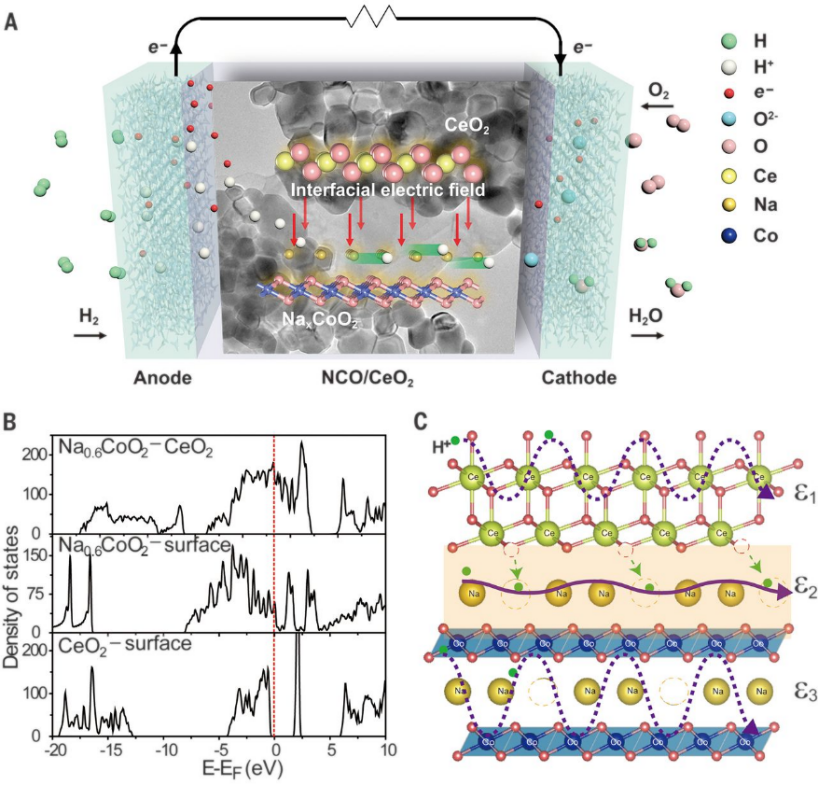
Absolutely, the work has undeniably reached a significant milestone, as highlighted in another perspective article on Science authored by Ni M. and Shao Z., titled "Fuel cells that operate at 300° to 500°C" (Science 2020, 369: 138-139). This publication notably underscores a remarkable achievement, elucidating the super proton transport mechanism through the ingenious utilization of a metallic-induced Local Electric Field (LF) at the interface of two semiconductor heterostructures.
This pivotal contribution adds a new layer of understanding to the intricate dynamics governing proton transport within fuel cells, particularly those operating within the temperature range of 300°C to 500°C. By leveraging the unique properties arising from the interface between semiconductor heterostructures, this breakthrough work opens novel avenues for enhancing the efficiency and performance of fuel cells. It's a testament to the continuous evolution and exploration within the field of fuel cell technology, emphasizing the critical role of innovative approaches in driving scientific progress and advancing sustainable energy solutions.
.
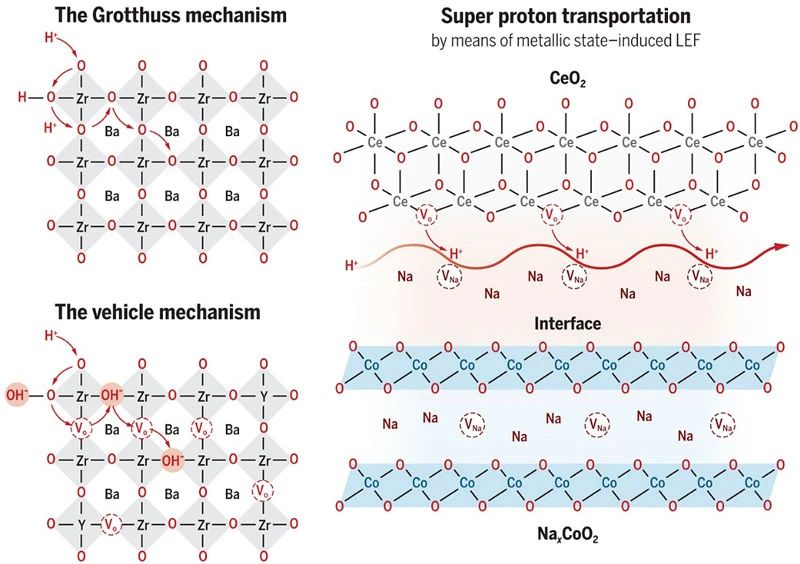
In 2020, Southeast university also published a review article which bridged Nanocofc and SIM/SIMFC:
7. Superionic Conductivity in Ceria�Based Heterostructure Composites for Low�Temperature Solid Oxide Fuel Cells, Nano-Micro Lett. 2020, 12: 178. https://doi.org/10.1007/s40820-020-00518-x.
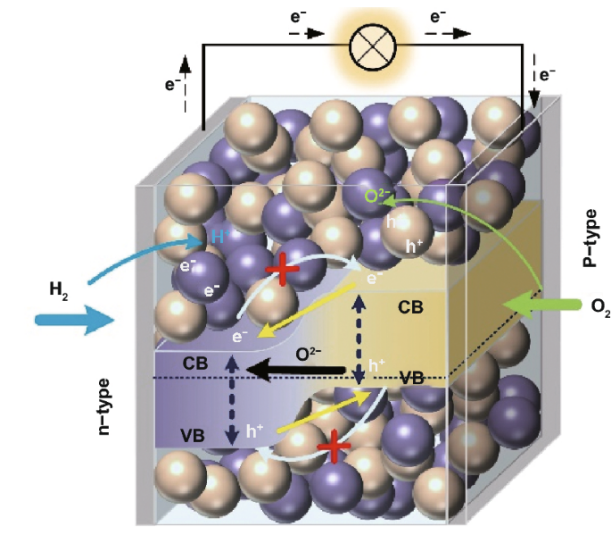
Following some reviews deepen understanding of Material and Scientific issues and principles, like:
8. A Bulk-Heterostructure Nanocomposite Electrolyte of Ce0.8Sm0.2O2-δ-SrTiO3 for Low-Temperature Solid Oxide Fuel Cells, Nano-micro letters, 2021, 13: 1-14, https://doi.org/10.1007/s40820-020-00574-3;
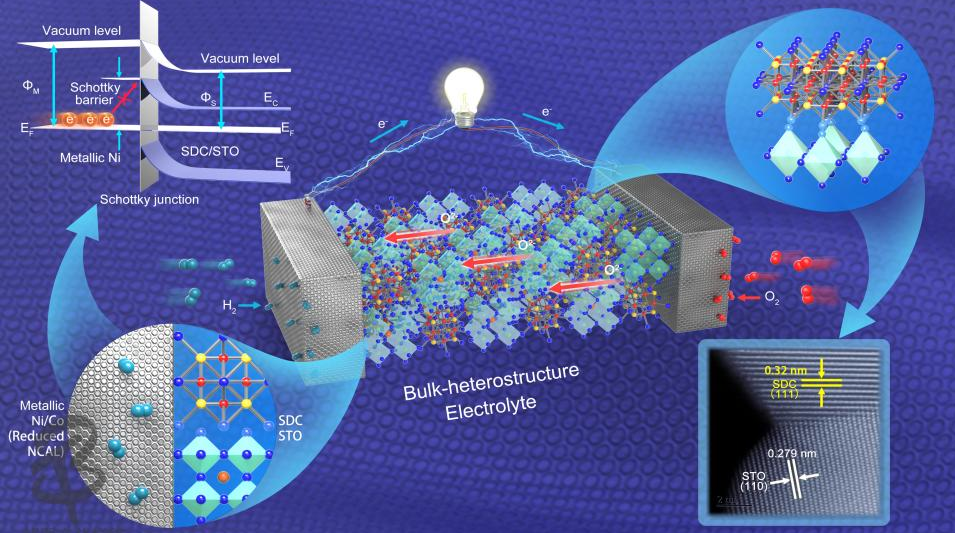
9. Validating the application of semiconductor-ionic conductor in solid oxide fuel cells as electrolyte membrane, Journal of Power Sources, 2021, 499: 229963, https://doi.org/10.1016/j.jpowsour.2021.229963;
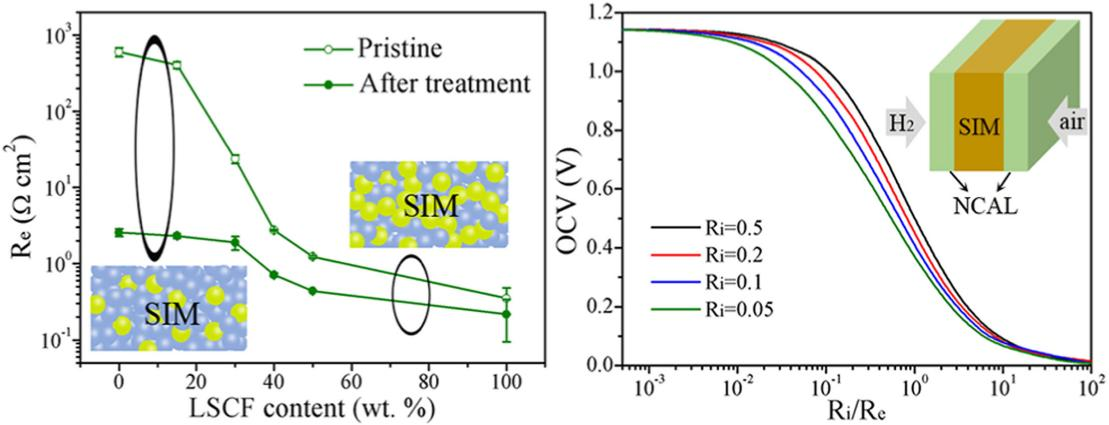
10. A triple (e−/O2−/H+) conducting perovskite BaCo0.4Fe0.4Zr0.1Y0.1O3-δ for low temperature solid oxide fuel cell, International Journal of Hydrogen Energy, 2021, 46: 9767, https://doi.org/10.1016/j.ijhydene.2020.07.095;
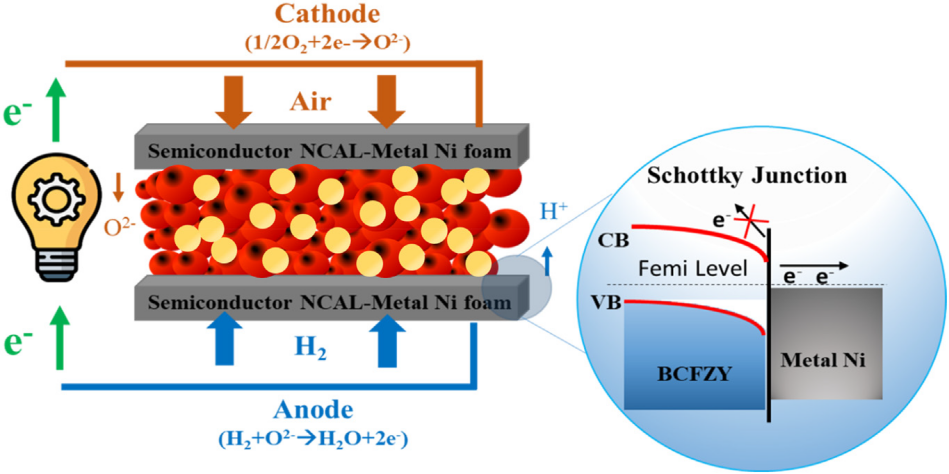
11. Recent advance in physical description and material development for single component SOFC: A mini-review, Chemical Engineering Journal, 2022, 444: 136533, https://doi.org/10.1016/j.cej.2022.136533.
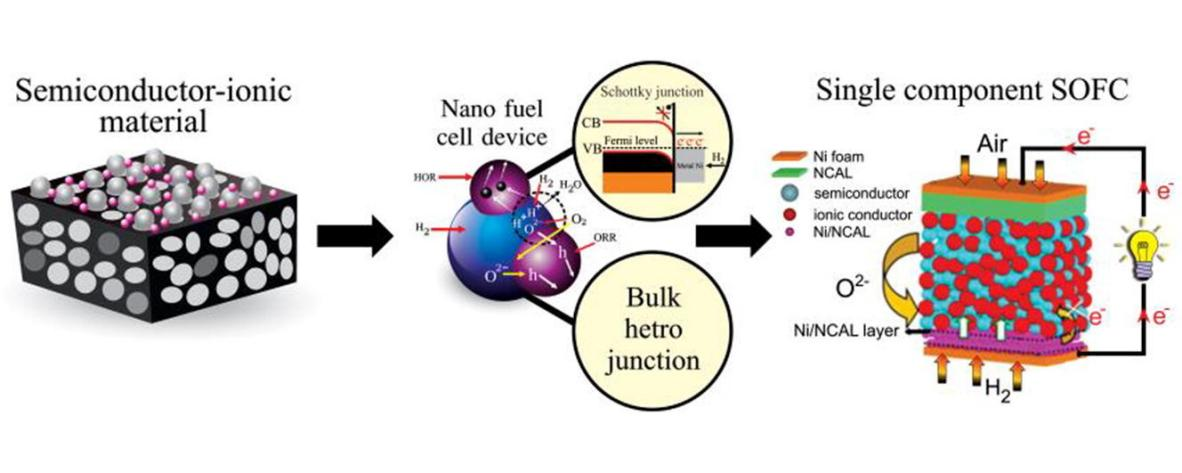
12. Junction and energy band on novel semiconductor based fuel cells, iScience, 2021, 24:102191. https://doi.org/10.1016/j.isci.2021.102191. and
13. Towards next-generation fuel cell materials, iScience, 2023, 26: 106869. https://doi.org/10.1016/j.isci.2023.106869.
In particular, several review and research articles published on Energy Materials :
14. A nanoscale perspective on solid oxide and semiconductor membrane fuel cells: materials and technology, Energy Materials 2021, 1: 100002. https://doi.org/10.20517/energymater.2021.03.;
15. 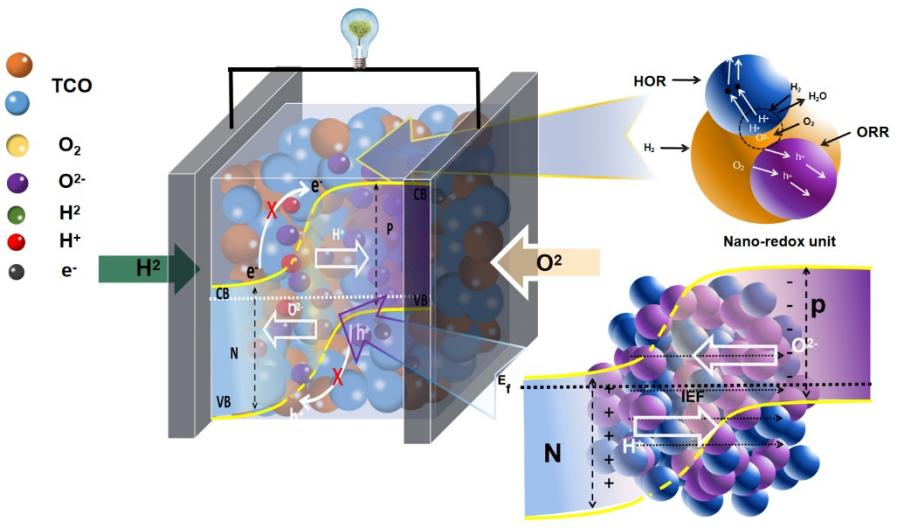
16. Advanced low-temperature solid oxide fuel cells based on a built-in electric field, Energy Materials, 2021, 1: 100007. https://doi.org/10.20517/energymater.2021.06.
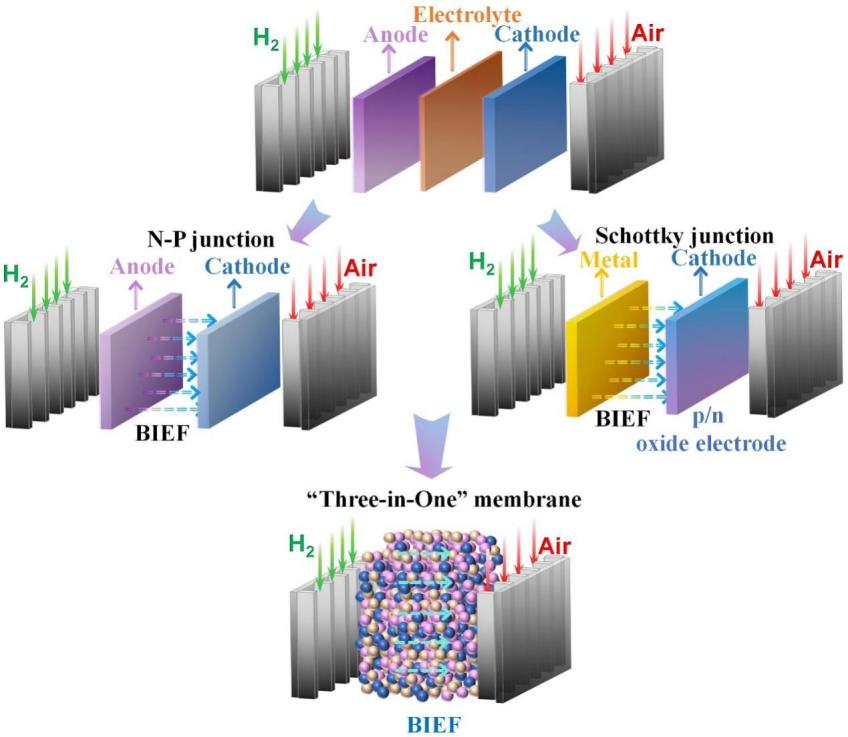
17. Advances in lithium-ion battery materials for ceramic fuel cells, Energy Materials. 2022, 2: 200041. https://doi.org/10.20517/energymater.2022.76.
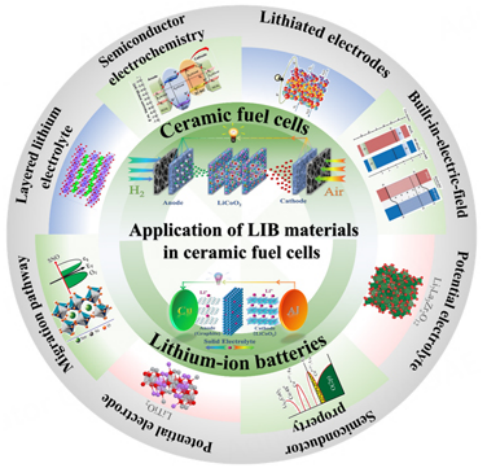
18. ZnO/MgZnO heterostructure membrane with type II band alignment for ceramic fuel cells, Energy Materials. 2022, 2: 200031. https://doi.org/10.20517/energymater.2022.27.
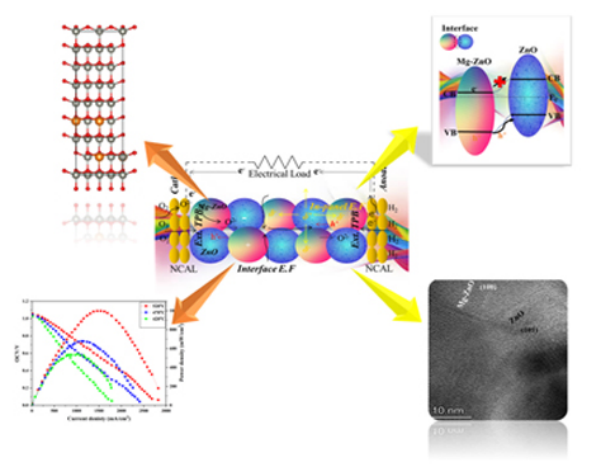
and many research publications on SIMs/SIMFCs, e.g.:
19. Promoted Electrocatalytic Activity and Ionic Transport simultaneously in Dual Functional Ba0.5Sr0.5Fe0.8Sb0.2O3-δ-Sm0.2Ce0.8O2-δ Heterostructure, Applied Catalysis B: Environmental 2021, 298: 120503 https://doi.org/10.1016/j.apcatb.2021.120503.
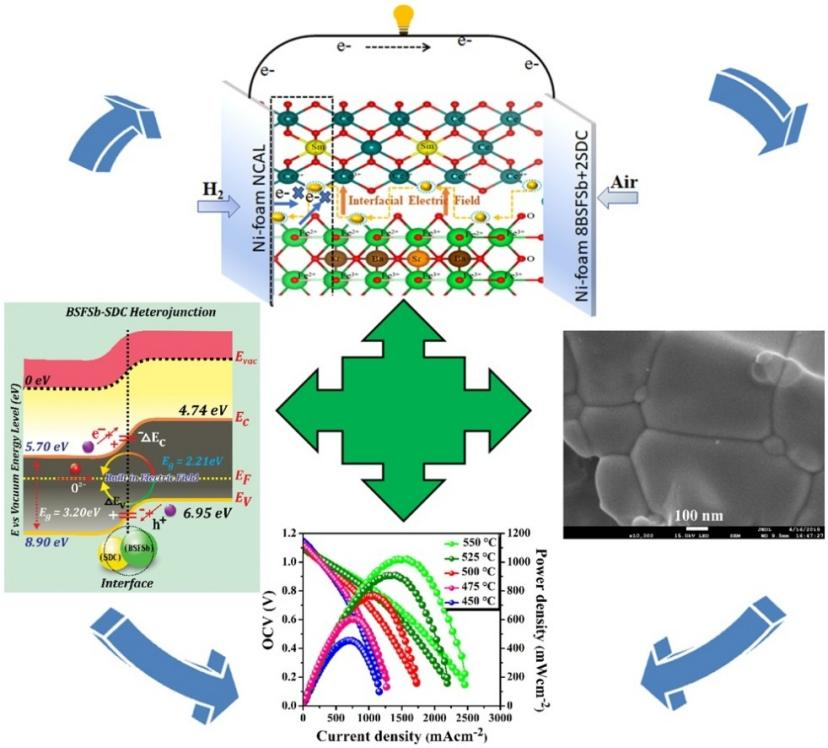
20. Surface-Engineered Homostructure for Enhancing Proton Transport, Small Methods, 2022, 6: 2100901, https://doi.org/10.1002/smtd.202100901 .
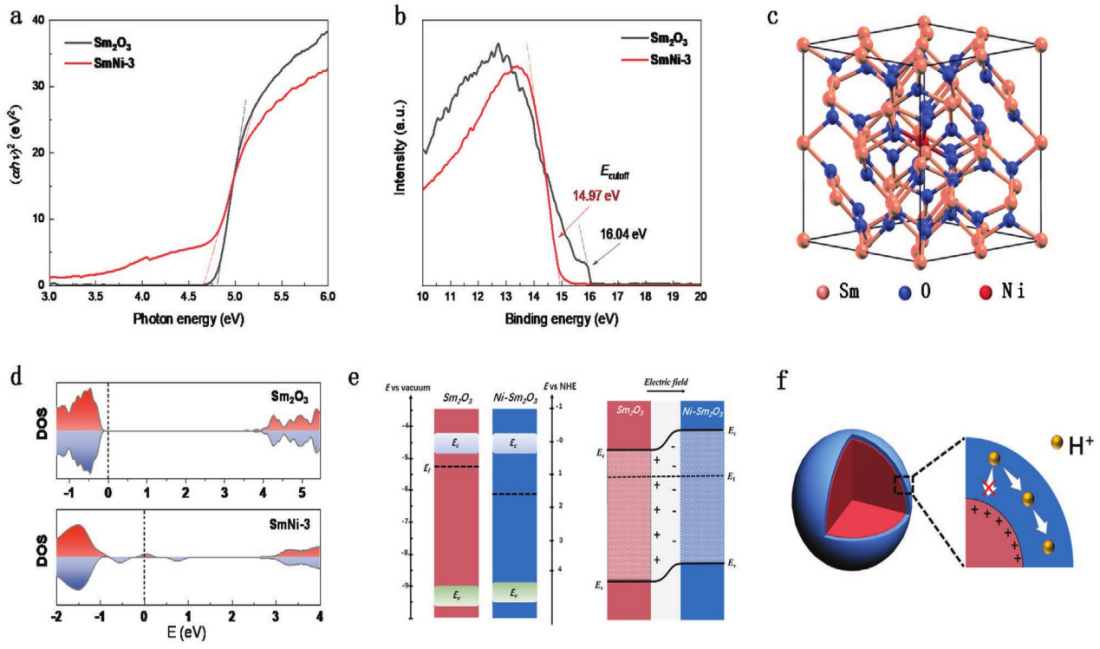
21. Designing a Novel Semiconductor Electrolyte (LaSrTiCrCeO3) with Enhanced Ionic Conduction for Low-Temperature Ceramic Fuel Cells, ACS Applied Energy Materials. 2023, 6, 2832. https://doi.org/10.1021/acsaem.2c03741
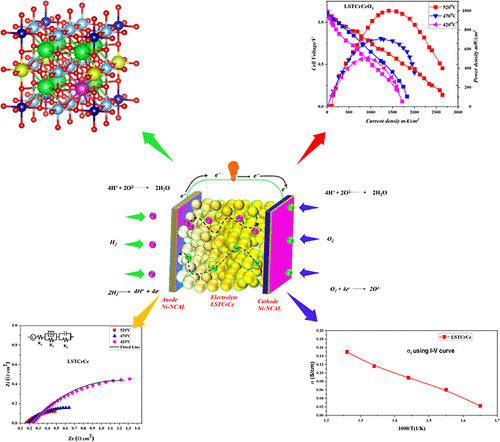
22. Enabling high ionic conductivity in semiconductor electrolyte membrane by surface engineering and band alignment for LT-CFCs, J. Membrane Science 2023, 668: 121264. https://doi.org/10.1016/j.memsci.2022.121264.
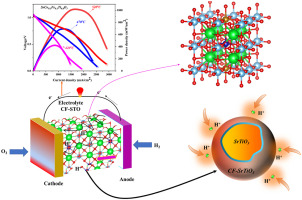
23. Highly Active Interfacial Sites in SFT-SnO2 Heterojunction Electrolyte for Enhanced Fuel Cell Performance via Engineered Energy Bands: Envisioned Theoretically and Experimentally, Energy Environ. Mater. 2023, e12606, https://doi.org/10.1002/eem2.12606.
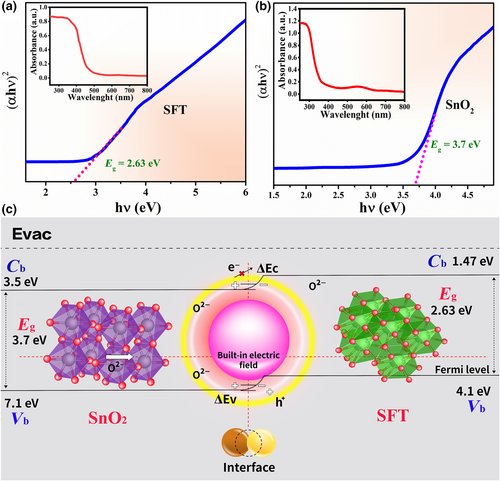
24. Interfacial Disordering and Heterojunction Enabling Fast Proton Conduction, Small Methods, 2023, 2300450. https://doi.org/10.1002/smtd.202300450.
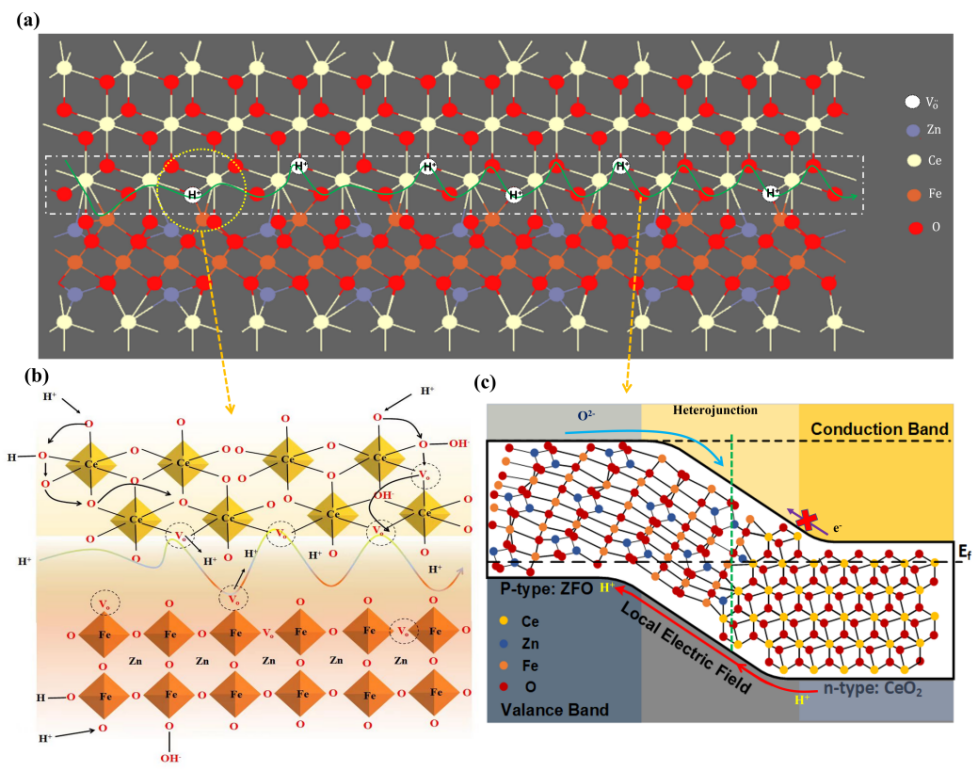
25. Fast ion-conductive electrolyte based on a doped LaAlO3 with an amorphous surface layer for low-temperature solid oxide fuel cells, Journal of Power Sources, 2023, 561: 232723. https://doi.org/10.1016/j.jpowsour.2023.232723.
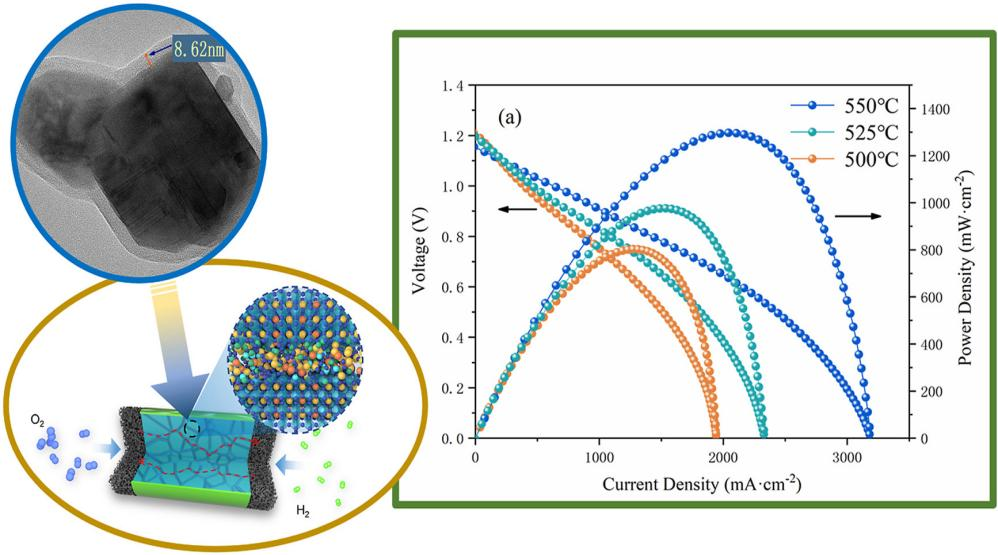
26. Designing High Interfacial Conduction beyond Bulk via Engineering the Semiconductor–Ionic Heterostructure CeO2−δ/BaZr0.8Y0.2O3 for Superior Proton Conductive Fuel Cell and Water Electrolysis Applications, ACS Appl. Energy Mater. 2022, 5: 15373. https://doi.org/10.1021/acsaem.2c02995
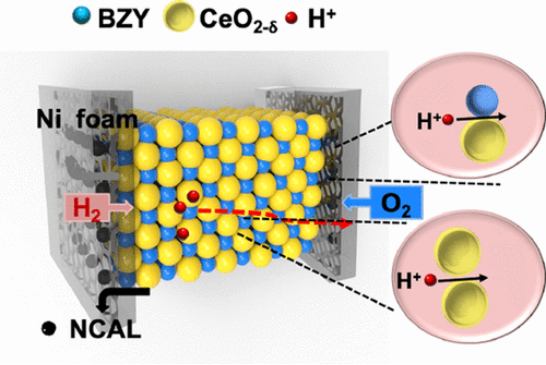
27. Ni/NiO exsolved perovskite La0.2Sr0.7Ti0.9Ni0.1O3−δ for semiconductor-ionic fuel cells: Roles of electrocatalytic activity and physical junctions, ACS Appl. Mater. Interfaces 2023, 15: 870. https://doi.org/10.1021/acsami.2c16002.

28. Interlayer Conducting Mechanism in α-LiAlO2 Enables Fast Proton Transport with Low Activation Energy for Solid Oxide Fuel Cells, ACS Sustainable Chem. Eng. 2022, 10, 46, 15094. https://doi.org/10.1021/acssuschemeng.2c04160.

29. Improving the electrochemical energy conversion of solid oxide fuel cells through the interface effect in La0.6Sr0.4Co0.2Fe0.8O3-BaTiO3 electrolyte, Journal of Colloid and Interface Science. 2023, 641: 70-81. https://doi.org/10.1016/j.jcis.2023.03.054.
